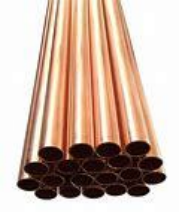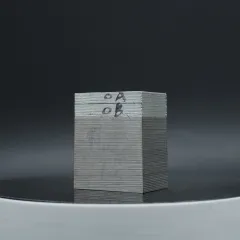1. Introduction
As of May 2024, global copper prices have surged past $8,800 per metric ton due to supply constraints and rising demand in renewable energy and EV infrastructure. This spike has reignited interest in copper scrap recycling—especially among DIY recyclers and small-scale collectors. One of the most common—and profitable—sources is insulated copper wire. But how do you strip copper wire for scrap and recycling safely and efficiently without damaging the metal or risking your health?

Stripping copper wire properly not only increases its scrap value (bare bright copper fetches up to 30% more than insulated wire) but also avoids fines or hazards from unsafe methods like open burning. In this guide, we’ll walk you through the best practices, tools, and alternatives—including when to use copper strip, copper rod, or copper tubing instead.
2. Why Stripping Copper Wire Matters
Recyclers pay significantly more for clean, bare copper. Insulated wire is often downgraded to ‘low-grade’ copper, while stripped ‘bare bright’ wire commands top dollar. Plus, many scrap yards now reject burned or contaminated copper due to environmental regulations.
- Burning copper wire releases toxic fumes (including dioxins) and is illegal in most U.S. states and EU countries.
- Properly stripped copper retains its conductivity and purity, making it ideal for reuse in electrical components, copper bars, or even copper rod production.
3. Tools and Methods to Strip Copper Wire
3.1. Manual Wire Strippers (Best for Small Jobs)

For short lengths or household wiring, manual strippers are affordable and precise. Choose adjustable strippers that match your wire gauge (e.g., 12 AWG, 10 AWG).
- Cut a small slit in the insulation.
- Gently pull the insulation off without nicking the copper.
- Ideal for stripping copper wire for scrap in small batches.
3.2. Automatic Wire Stripping Machines (Best for Volume)
If you’re processing 50+ pounds weekly, invest in a bench-top stripper. These machines handle everything from thin telecom wire to thick THHN cables.
- Set the blade depth to avoid cutting into the copper.
- Feed the wire through—most machines strip and spool simultaneously.
- Great for stripping wire for recycling at scale.
3.3. The ‘Pull-and-Peel’ Method for Romex or NM Cable

For common household cables like Romex:
- Use a utility knife to slit the outer jacket lengthwise.
- Peel back the jacket to expose individual insulated conductors.
- Strip each conductor with manual strippers.
4. What NOT to Do: Avoid These Dangerous Shortcuts
4.1. Never Burn Copper Wire for Scrap
Burning insulation off copper wire is tempting but extremely hazardous. It releases carcinogens and ruins the copper’s surface, lowering its value. Most reputable scrap yards now test for burned copper and reject it outright.
4.2. Avoid Using Heat Guns or Torches
While less toxic than open flames, excessive heat can oxidize the copper, turning it brittle and reducing conductivity—making it unsuitable for high-grade reuse like copper bus bar or copper rod welding.
5. Identifying High-Value Copper Types Beyond Wire
Not all copper is equal. Knowing what you have helps you choose the right method—and get the best price.
5.1. Copper Strip and Flat Copper Strip
Flat copper strips (e.g., 25x3mm copper earth strip) are common in grounding systems. They’re often sold as copper strip for earthing or copper strip roll. Look for clean, unoxidized pieces—nickel plated copper strip or beryllium copper strip may fetch premium prices.
5.2. Copper Rod and Round Bar Copper
Solid copper rods—like copper earth rod, earthing rod copper, or copper round bar—are used in electrical grounding and welding. Copper brazing rod and copper to copper welding rod are specialty types. If you find these, don’t strip them—they’re already bare and valuable as-is.
5.3. Copper Tubing and Pipe
Air conditioning copper pipe (e.g., 15mm copper tube or 22mm copper pipe) is another high-value scrap source. Clean it of fittings and oil before selling. Copper pipe price and ac copper pipe price remain strong due to HVAC demand.
6. Where to Sell Stripped Copper
Once stripped, sort your copper into categories:
- Bare bright wire (clean, unoxidized, no solder)
- #1 copper (pipe, bus bar, copper flat bar)
- #2 copper (oxidized or with minor impurities)
Call local yards to compare copper rod price, copper strip price, and copper ingot price. Use phrases like ‘copper strip near me’ or ‘copper bars for sale’ to find buyers quickly.
7. Conclusion
Stripping copper wire for scrap doesn’t have to be hard—or dangerous. With the right tools and knowledge, you can safely extract maximum value from your copper waste. Remember: never burn it, always sort by type, and keep an eye out for high-value items like copper bonded ground rod, copper clad steel earth rod, or flexible copper bus bar. In today’s market, clean copper is cash—and knowing the best way to strip copper cable puts more of it in your pocket.
Our Website founded on October 17, 2012, is a high-tech enterprise committed to the research and development, production, processing, sales and technical services of ceramic relative materials such as How. Our products includes but not limited to Boron Carbide Ceramic Products, Boron Nitride Ceramic Products, Silicon Carbide Ceramic Products, Silicon Nitride Ceramic Products, Zirconium Dioxide Ceramic Products, etc. If you are interested, please feel free to contact us.

